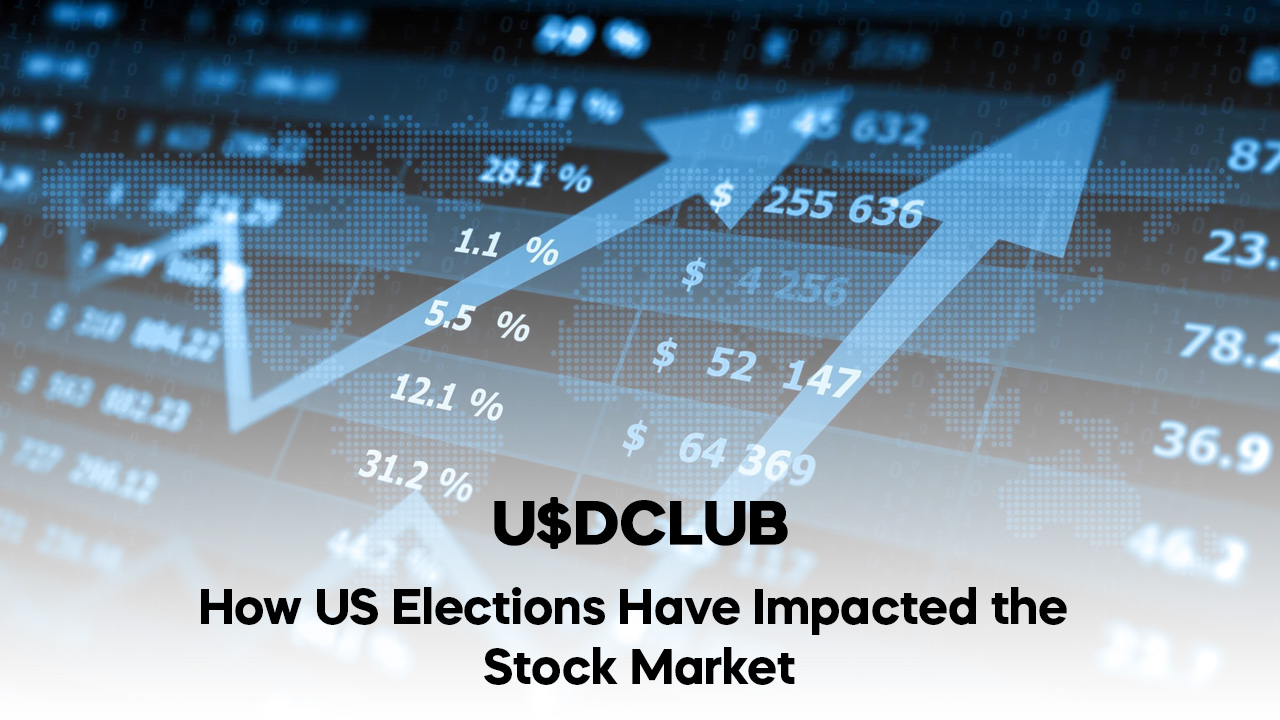The relationship between US elections and the stock market has been a point of study for investors, traders and analysts for decades. Many would expect huge swings in the market depending on which political party wins the White House or controls Congress, but historical data seems to indicate that the reality is that the stock market is far more resilient and accommodating than one might think. In-fact, over long periods broad based indices like the S&P 500 have trended higher no matter which party was in control. This article looks at how US elections impact the stock market by breaking down Presidential cycles, analyzing control of Congress and general overall economic conditions.
-
Long-Term Stock Market Trends
Going all the way back to 1961, the S&P 500 has delivered positive returns during all but two U.S. presidential tenures. Only Richard Nixon and George W. Bush were unfortunate enough to oversee declines in the broad-based index during their time in office.
This means that, at least historically, it has not paid for investors to deviate too much from their long-term investment plans based on an election outcome. Governments can and do affect the return for capital in a variety of ways, positive and negative; still, as these periods shorten through time, their influence on ever-longitudinal corporates actually purchases of a nation’s profits become less relevant. For investors with an eye towards long-term wealth creation, this is certainly a comforting reality.
-
The Presidential Cycle Theory
A concept that has garnered attention in financial circles is the “Presidential Cycle” theory, which suggests that stock market returns tend to follow a predictable four-year cycle based on the U.S. presidential term. According to this theory, the first two years of a president’s term often see weaker stock market performance, followed by stronger returns in the third and fourth years. The rationale behind this pattern is rooted in political priorities. When a new president takes office, there is often a focus on fulfilling campaign promises, which may include non-economic priorities such as social welfare policies or regulatory changes. These initiatives can create uncertainty or reduce business profitability, resulting in muted stock market performance in the early part of the presidential term.
If the president is preparing for re-election (or is seeking to have members of his/her party re-elected), the policies and fiscal measures it proposes become friendlier to corporate interests and economic growth and performance enhancing policies are adopted. This in turn can result in overall improvement of the stock market particularly in the second term of the president given that business gets good policies coupled with better investors confidence.
However, there is a tendency for a decrease in the number of female participants in subsequent phases of the recruitment process in many cases, but that is not always the case. In later cycles, the relationship is less distinct with other aspects of the market dominating the general trend at the cost of presidential policies.
-
The Role of Congress in Stock Market Performance
It is rather beyond doubt that the president is one of the key political actors in the United States and controls the economical processes to a great extent Nevertheless, the formation of Congress also influences market performance in one way or another. The fact is that the stock market always function best under divided government, where one party rules the presidency and the other – at least one branch of the Congress. This divided control can lead to policy stalemate that in the business world can be bullish for markets and equities. The rationale for this is based on the idea that when large-scale legislative agenda is threatened failure, business and investor certainty is maintained through the blocking off large policy shocks.
On the other hand, if one party controls both the presiden cy and congress there is likelihood for polio y shifts stability and this may portend unrest in the market. This is especially the case when the Democrats have the presidency, Senate and the House of representatives, which has had lower returns than other forms of government. However, to the same effect, one must remember that during democratic regime, too, the market has had a generally positive return showing the overall market trend of growth in stock markets.
-
Policy and Geopolitical Considerations
However, flow control and congressional control of stock market performance although These are important indicators for stock market performance, they are often outweighed by policies that come into/out of force in shorter time horizons than elections. For instance, allowance and money controls, purchase and sales relations, socioeconomic factors such as wars or diseases influence investors’ perception and trend.
For instance, the COVID 19 global pandemic that affected the market in the year 2020 can be an example where external events exert most force to overwhelm the politicking. Although it was not a usual year due to presidential elections, the market remained mostly fixated on monetary policies followed by the Federal Reserve, fiscal support, and global action against Covid-19. Likewise, the increases and decreases in trade relations between the USA and other countries, especially China, have been the leading causes of a volatile market in this past few years most probable due to stock market volatility.
Therefore, despite the fact that political elections provide the framework for economic policy, they are but one factor that determines economic policy direction, the state of world economy, technology, and demography among them.
-
Historical Election-Year Market Performance
Analyzing stock market returns during previous years that contained the election shows that markets move higher regardless of the political party that emerged victorious. In presidential election years, the study reveals that the majority of the S&P 500 index resulted in a positive performance. In fact, the S&P 500 index has delivered negative returns during merely four US presidential elections after Second World War (1960, 2000, 2008 and 2020), out of which in three of them, namely 2000, 2008 and 2020, have been during major financial or economic crisis.
Later, in 2000, the market operated with lots of risk brought about by the Bush- Gorer election disagreement and the world famous dot-com bubble. In 2008, the major focus of the global market was largely influenced by the financial crisis, while in 2020 the COVID-19 outbreak was responsible for one of the most tumultuous years. The distinct feature of these years is the fact that shift in market performance was more caused by some economic and financial circumstances which were outside the process of election.
This highlights an important point for investors: although people may decide to buy or sell in the market depending on political processes, there are other forces that matter including fundamental forces such as business earnings or political climate in other countries.
-
Impact of Election Uncertainty on Volatility
In fact, while stock markets tend to increase overall in the long term, electorate can remain a cause for fluctuations and their fluctuations may be more synchronized if the outcome is unsure or if the result may drastically change the governmental policies significantly. For instance, the market increased its activity and fluctuations in the period before the 2016 presidential election because Trump who was a candidate with a relatively uncertain agenda was widely perceived as the possible winner.
Another situation connected with rather high volatility was after 2020 elections as results were not completed instantly; there were some legal procedures. But, as soon as the situation clarified, the market steadied and started rising again at the same rate, as before.
The general trend has been one of greater activity during election years which is why it is always advisable for investors to look at the big picture. Short term fluctuations in the market tends to be very disruptive but what is very important to realize is that this is a perfect opportunity to purchase high quality assets at discounted rates. To avoid being affected by short term political disturbances investors should instead concentrate on the long term fundamentals of the companies that they invest in in order to reap from the continuous growth in the stock market.
Conclusion
It is therefore impossible to simplify the relation between the US elections and the organised markets, in turn expressing its impact on the stock markets. It has been observed that presidential elections or change of control of the Congress can have a little influence on the markets neither investors nor stocks. In the past, this market has also been characterized by great resilience for the long haul, irrespective of the party in power.
So, the advice for investors is not to swing to vote and dramatically alter their investment portfolio. Rather they should remain concentrate on the basics of the companies they are investing in this market, should and always stay diversified and long term oriented in their approach. In this way, they can avoid the perils of election risk years, while setting themselves up to capture the general long-term uptrend from equities.







